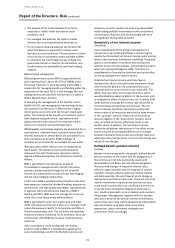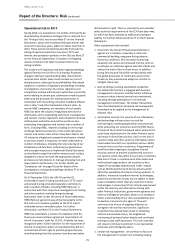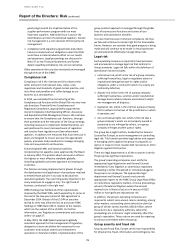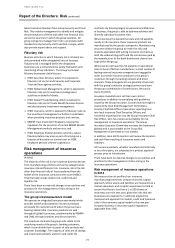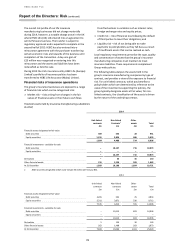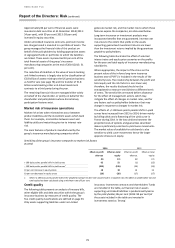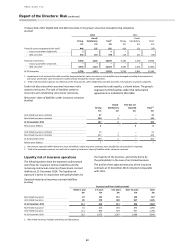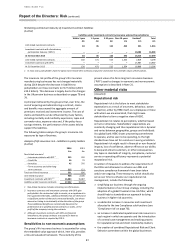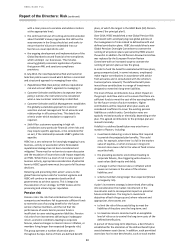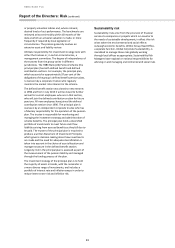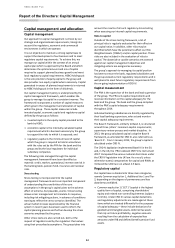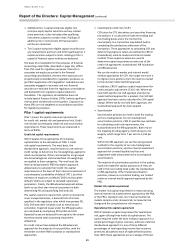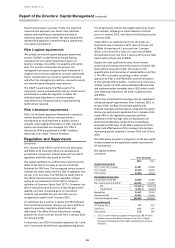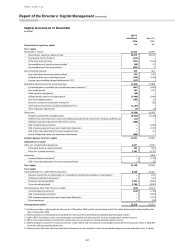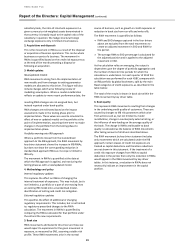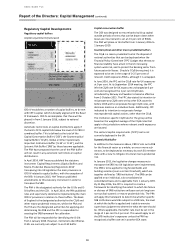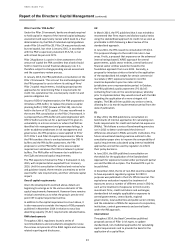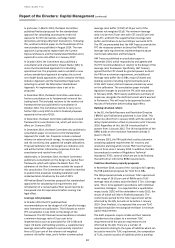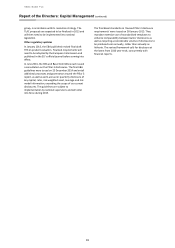HSBC 2014 Annual Report Download - page 85
Download and view the complete annual report
Please find page 85 of the 2014 HSBC annual report below. You can navigate through the pages in the report by either clicking on the pages listed below, or by using the keyword search tool below to find specific information within the annual report.
HSBC BANK PLC
Report of the Directors: Risk (continued)
83
or property valuation indices and, where relevant,
desired levels of out-performance. The benchmarks are
reviewed at least triennially within 18 months of the
date at which an actuarial valuation is made, or more
frequently if required by local legislation or
circumstances. The process generally involves an
extensive asset and liability review.
Ultimate responsibility for investment strategy rests with
either the trustees or, in certain circumstances, a
management committee. The degree of independence of
the trustees from the group varies in different
jurisdictions. The HSBC Bank (UK) Pension Scheme (the
principal plan) has both defined benefit and defined
contribution sections. For example, the principal plan,
which accounts for approximately 97 per cent of the
obligations of the group’s defined benefit pension plans,
is overseen by a corporate trustee who regularly
monitors the market risks inherent in the scheme.
The defined benefit section was closed to new entrants
in 1996 and from 1 July 2015 it will be closed to further
accrual for current employees who are in that section,
who will join the defined contribution section for future
pensions. All new employees have joined the defined
contribution section since 1996. The principal plan is
overseen by an independent corporate trustee who has
a fiduciary responsibility for the operation of the pension
plan. The trustee is responsible for monitoring and
managing the investment strategy and administration of
scheme benefits. The principal plan holds a diversified
portfolio of investments to meet future cash flow
liabilities arising from accrued benefits as they fall due to
be paid. The trustee of the principal plan is required to
produce a written Statement of Investment Principles
which governs decision-making about how investments
are made and the need for adequate diversification is
taken into account in the choice of asset allocation and
manager structure in the defined benefit section.
Longevity risk in the principal plan is assessed as part of
the measurement of the pension liability and managed
through the funding process of the plan.
The investment strategy of the principal plan is to hold
the majority of assets in bonds, with the remainder in
a more diverse range of investments, and includes a
portfolio of interest rate and inflation swaps in order to
reduce interest rate risk and inflation risk.
Sustainability risk
Sustainability risks arise from the provision of financial
services to companies or projects which run counter to
the needs of sustainable development; in effect this risk
arises when the environmental and social effects
outweigh economic benefits. Within Group Head Office,
a separate function, Global Corporate Sustainability, is
mandated to manage these risks globally working
through local offices as appropriate. Sustainability Risk
Managers have regional or national responsibilities for
advising on and managing environmental and social risks.


